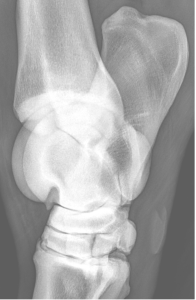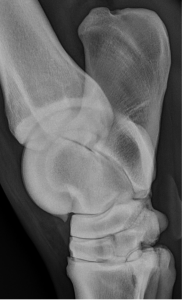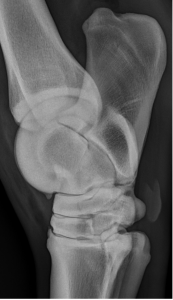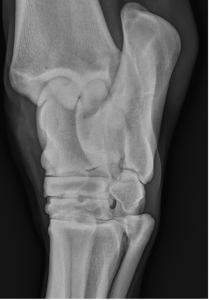Despite her talents the 9-year-old warmblood mare had difficulty in collecting behind, diminished power, and a reluctance to perform her best. No asymmetry was detected, so to uncover the root cause we went through a series of diagnostic procedures. Under saddle, we conducted low-4 point, DBLPN (PSD suspensory ligament block) , and TMT joint blocks. Interestingly, the mare showed significant improvement when the TMT joints were blocked. Repeating the assessment 48 hours later, this time reversing the blocks, yielded identical results, confirming our suspicions of hock (TMT joint) arthritis.
Further investigation via radiographs revealed mild osteophytosis of the dorsal aspect of the TMT joints and sclerosis of the third tarsal and central tarsal bones. To address this, we administered 1ml of ArthramidVet®️ (2.5 iPAAG) into each TMT.
Following this, a tailored exercise regimen commenced, starting with light workouts on a water treadmill for two weeks, and gradually increasing intensity over the next two weeks. Remarkably, the mare resumed training under saddle without altering her routine.
The outcome was inspiring: the mare not only competed successfully for the remainder of the season, but she continued to excel for four more months. However, around 14 months later, similar signs emerged. Swift action was taken, repeating the 1ml injections with the same exercise protocol. Today, she’s back in the arena, thriving in competition, showcasing her resilience and the effectiveness of our approach in treating hock (TMT joint) arthritis with ArthramidVet®.



